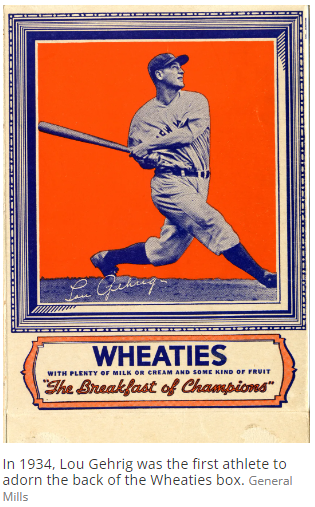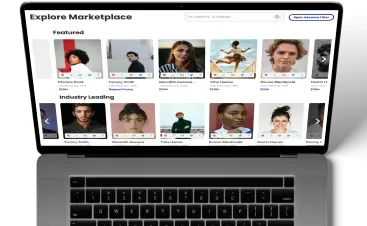“But Mom, It’s from the Kevin Talbot collection.”
My son made this case to buy the Primal RC Kevin Talbot V4 Edition truck. He only needed assurance that his favorite RC car influencer recommended it. This is the effect an influencer has on their followers.
So obviously, smart brands, small or big, new and old, now leverage influencer marketing and influencers’ trust and credibility with their followers to promote and sell products.
In this article, we’ll discuss the reasoning and logic behind influencer marketing, and I’ll let you in on how you can use it to build brand image and drive conversions.
But first things first.
What is Influencer Marketing?
Influencer marketing is when businesses capitalize on the trust and credibility of influencers to sell products.
When a business partners with influencers who closely align with their brand message and values and have followers within the same demographic, they are more likely to attract customers. These targeted customers are also highly likely to be more loyal than customers attracted through traditional marketing efforts.
The Origins of Influencer Marketing
Although the term “influencer marketing” was coined much later, the concept has existed since the 1700s. Historically, businesses have used the prestige and appeal of societal figures like royalty, athletes, and celebrities to sell products.
For example, in the 1700s, Josiah Wedgewood, a British potter, used royal patronage as a branding tool after being granted permission to style himself as a “Potter to Her Majesty,” used his connections and the social proof from the royal endorsement to enhance his reputation.
Afterward, in the age of print media, businesses used newspaper and magazine ads to show athletes endorsing their products. Some notable examples are Wheaties “Breakfast of Champions” and early Coca-Cola ads capitalizing on the idea.


Then in the Radio and TV era, the same strategy was used. Influential people and public figures appeared in ads to promote products and brands.
Julia Child promoting American Express is an early example of influencer marketing. American Express leveraged Julia’s reputation and popularity to brand themselves as a prestigious choice for successful people.
The Rise of Influencer Marketing in Today’s Digital Era
Today, influencer marketing has shifted from celebrities and athletes to dedicated “influencers.” These social media personalities have a niche following and give brands access to niche target markets for focused selling.
But why the shift?
It’s because consumers are now more skeptical of traditional advertising and require a personal connection and social proof before buying products. As influencers are seen as relatable and authentic sources of information, people trust them over generic marketing.
We owe the rise of influencer marketing all to social media platforms like YouTube, Instagram, and TikTok. What we once turned to family or friends for has now been largely replaced by social media. Whether it’s deciding between coffee makers or advice needed on raising teenagers, we look to social media for help.
This gave way to thought leaders who shared their knowledge with others, in specific niches. These thought leaders gradually built a following, which then presented an opportunity for brands to use their influence to reach targeted audiences and drive conversions.
Now, each platform has a growing number of influencers with a dedicated following in target niches.
But, what is it about social media figures endorsing a product that makes 92% of marketers believe it’s an effective form of marketing?
Let’s discuss.
What is the Premise Behind Influencer Marketing?
We know that by sharing their personal experiences, influencers sway consumer behavior in favor of the brands they endorse. But, there are several elements that lead to this strong influence.
1. People perceive influencers to be more relatable
We trust the preferences of people we relate to or who we find to be inspirational.
Followers see influencers as relatable regular people who live the same lives they do and go through the same experiences and challenges they go through. So, when an influencer endorses a product, followers see it as friendly advice from someone they know rather than a sales pitch.
2. Influencer content is authentic
Influencers build their reputation gradually by being relatable and trustworthy. When they review a product, it’s either in the context of their daily lives or in response to a follower’s query. This is why their content is more closely aligned with their audience’s needs and interests.
Plus, they’re transparent with their opinions. They don’t shy away from sharing criticism, doubts, and concerns making their endorsements feel more genuine, and persuasive. So, naturally, an influencer’s review brings a level of authenticity that traditional marketing just doesn’t.
Also Read: Influencer Marketing for Ecommerce: Tips for Online Retailers
3. Followers feel personally connected to influencers
When influencers interact with their followers, they learn their likes, dislikes, challenges, and preferences. Over time, they master what exactly motivates their followers and what turns them off. This allows them to create targeted content that resonates with their followers.
For example, Gymshark collaborated with fitness influencers to promote their products. The influencers posted “try-on hauls,” showcasing Gymshark products, and discussed their functionality and fit in a way that resonated with their followers. They even indulged in dialogue with their audience. This not only boosted sales but also made followers feel personally connected to the influencers and the brand.
4. Influencers use storytelling to enhance the impact of their message
Storytelling resonates more deeply with human emotions, which is a more powerful driving force than logic and reasoning. It makes followers think, “If they can do it, so can I.”
When an influencer weaves a product into their life story, not only does it feel natural to their followers, but it also evokes some emotion in them, increasing relatability and driving them to make the purchase.
5. An influencer’s endorsement serves as social proof
Influencers are thought leaders and experts in their niche. Their endorsement is a seal of approval for a product because it has passed the influencer’s standards of quality and appeal. When followers see that an admired influencer uses a product, it acts as a guarantee and motivates them to buy the same product.
For example, when Audible used the voices of well-known YouTubers and podcasters as social proof, it came across as a genuine endorsement and persuaded followers to try their service. This expanded Audible’s customer base and boosted its reputation.
6. Influencers engage and interact with their followers
Most influencers, unlike businesses and celebrities, interact with their followers regularly through comments, direct messages, and content. This engagement creates a sense of community and makes followers feel more connected to the influencer.
It also helps to solidify their trust and loyalty which then extends to any product or company endorsed by the influencer.
7. Influencers have a dedicated niche following
For me, one of the biggest reasons why influencer marketing is so successful is because influencers give brands direct access to niche markets.
It’s tough for brands to identify and reach individuals who perfectly align with their ideal customer profiles. Through influencer marketing, given that brands do their due diligence in finding influencers whose followers match their target demographics, they can hit the jackpot—direct access to a pool of potential long-term customers already interested in what the brand offers.
For example, they collaborated with targeted influencers when H&M wanted to promote its Fall Studio Collection, which included semi-formal workwear aimed at women. Fashion influencers Julie Sariñana and model Ela Velden had a substantial relevant social media following.
The focused campaign showcased the collection’s pieces, highlighting the style and versatility of the clothes and reaching the intended audience, who were interested in fashionable professional attire.
Ways to Incorporate Influencer Marketing Into Your Business
There are many ways for brands to leverage influencer marketing. Let’s explore a few cool ones that’ll drive traffic to your website, increase conversions, and help make your brand image.
1. Get personal with storytelling
Captivate followers using personal, relatable stories that show how your product fits into real-life scenarios. This creates a narrative that resonates with their followers and draws in more customers while building a more personal connection.
Remember the partnership between Nike and LeBron James? Nike didn’t just promote basketball shoes and apparel; they brought LeBron’s journey of perseverance and success to the forefront.
When LeBron shared how Nike gear had been a constant throughout his challenges and triumphs in sports, it made the narrative more genuine and relatable. This strategy helped build a deep emotional connection with consumers, who saw the products as part of a larger story, much like LeBron himself.
2. Make it fun with challenges
Moncler, a luxury fashion brand known for its high-end down jackets and sportswear, launched the #MonclerBubbleUp campaign on TikTok. Popular Gen Z fashion influencers, like Charli D’Amelio and Bella Porch, created fun and interactive challenges centered around Moncler’s signature bubble coat.
The campaign introduced Moncler as a trendy and relatable brand to a younger demographic and boosted its presence among new, style-conscious consumers.
3. Make your product come alive with interviews and Q&A sessions
Interactive content like interviews or Q&A sessions gives you and your influencer a chance to showcase and share valuable insights. Don’t forget to experiment with different formats, like articles or live streams.
Adidas teamed up with Pharrell Williams for an engaging series of interviews and Q&A sessions to promote their “Adidas Originals = Pharrell Williams” line.
The sessions were shared on platforms like YouTube and Instagram. Pharrell opened up about his creative process, the cultural inspirations behind the designs, and his aim to blend fashion with meaningful social themes.
This wasn’t just about pushing products; it was about sharing a vision of community, creativity, and inclusivity. The initiative solidified the brand’s image and boosted sales, leading to quick sell-outs of the line.
4. Stand out with guest blogging
Create guest blog posts on the influencer’s platforms. This combines their unique voice with your brand’s message, driving traffic to your site through strategic links within the post.
Glossier teamed up with beauty influencer Katie Jane Hughes for a guest blogging initiative on “Into The Gloss.” In her posts, Hughes shared her beauty routine and recommended Glossier products, sharing her expertise and personal stories. The collaboration drove her followers to Glossier’s site, boosting visibility and sales.
5. Engage influencers to directly endorse your products
Show potential customers how influencers use your products in their daily lives or specific scenarios. It’s not an advertisement but a testimonial from a trusted source.
For instance, when an influencer shows how a tech gadget adds to their home office or how a skincare product is a must part of their morning routine, it gives authenticity and meaning to the content and it no longer feels promotional.
6. Turn your customers into influencers
Your customers are your biggest advocates. Dig into your existing followers and find which of your customers have a notable following. Maybe a customer already mentioned your product in one of their posts and tagged you. Reach out and collaborate to create content highlighting their experiences while showcasing your product.
Glossier has built a network of over 500 ambassadors by transforming their customers into influencers.
How to start Influencer Marketing?
Before you jump all in, here are a few things to remember.
-
Choose influencers who match your brand’s vibe and target audience
Research and select those whose followers will likely require your product or service. For instance, team up with a makeup pro on Instagram to promote a beauty product. Their sway and crowd trust will boost your brand and connect you with your ideal buyers.
Kickstart your efforts by joining Glewee, an all-in-one influencer marketing platform. Find influencers for free, connect with them, and manage your influencer marketing campaigns easily on a single platform.
-
Nail down specific aims for your influencer campaign
Whether it’s boosting brand awareness, raking in sales, or penetrating a new market, be crystal clear!
This way, you gauge your campaign’s success with hard-hitting metrics like engagement, conversions, and ROI.
-
Keep it real
Encourage influencers to whip up content that feels true to them. Authenticity is the magic ingredient here. If you’re a travel brand starting a podcast, bring in a travel blogger who talks about real adventures with your services in the mix. Their authentic stories pack a punch, giving your audience value while slipping in your brand’s vibe.
-
Spread your wings
Don’t stick to just one social platform. Cast a wider net. Maybe a tech firm taps into YouTube and Instagram influencers to hit different audiences. This way, you’re making the most of each platform’s strengths.
-
Build for the long haul
Forge lasting bonds with influencers. Long-term partnerships breed better for both parties. An ongoing connection lets your message grow and evolve, boosting authenticity and impact.
Conclusion
Influencer marketing capitalizes on basic human psychology by leveraging our need for assurance and quality before buying. It’s a powerful brand strategy to target specific audiences, build relationships, and develop a loyal customer base.
Not sure where to start?
Join Glewee for free and gain access to over 10,000 verified influencers spread across multiple social media platforms.





